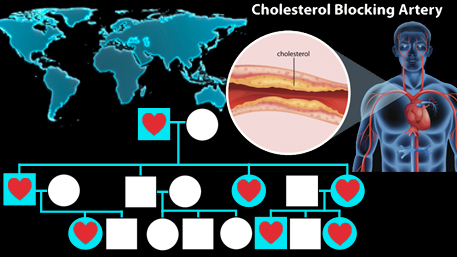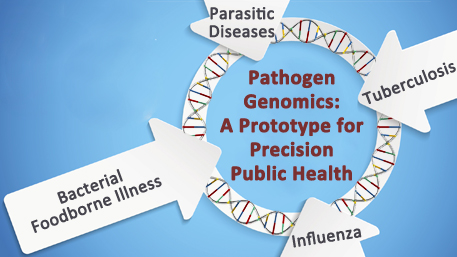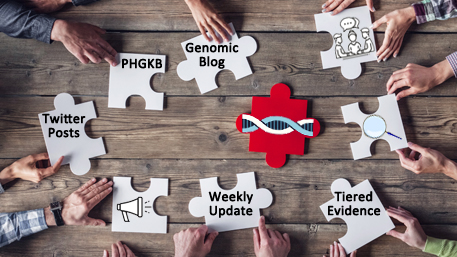Genomics and Precision Health Blog – Archive Posts
Study of Children with One vs. Two or More Siblings with Autism Spectrum Disorder: Expected and Unexpected Similarities and Differences

A recent prospective study from the Baby Siblings Research Consortium found that children with two or more siblings with autism spectrum disorder (ASD) were more than twice as likely to be classified as having ASD at age 3 than children with only one sibling with ASD. The Consortium was formed to facilitate prospective studies of Read More >
Posted on byGenome-wide Association studies (GWAS) in the Quest to Understand the Causes of Birth Defects

Our recent review and commentary found that relatively few genome-wide association studies (GWAS) on structural birth defects have been done, compared with the number of GWAS on other conditions. We reviewed the literature to identify GWAS on oral clefts, congenital heart defects (CHDs), biliary atresia, pyloric stenosis, hypospadias, craniosynostosis, and clubfoot. We did not find Read More >
Posted on byReducing the Global Public Health Burden of Familial Hypercholesterolemia: More Work Ahead

In our previous blog, we discussed familial hypercholesterolemia as a prototype for “precision public health” and how the combination of public health and genetic approaches can contribute to raising awareness, diagnosis, and treatment of more than 1 million individuals in the United States with this relatively common genetic condition. Familial hypercholesterolemia (FH) is an underdiagnosed Read More >
Posted on by“Precision” Health Tools and… Increased Health Disparities?

Working from the perspective of public health, we have frequently expressed concerns about the potential of precision health technology to exacerbate health disparities. Many of these discussions have focused on genomic-based approaches such as using polygenic risk scores (PRS) for a wide array of disease and health outcomes. Because of minority underrepresentation in basic research, Read More >
Posted on byProgress in Pathogen Genomics as a Prototype for Precision Public Health

Rapid advances in pathogen genomics have ushered in a new era of “precision public health.” Next-generation sequencing is already enabling more effective investigations of outbreaks of foodborne illnesses, better-targeted tuberculosis control, and more timely and granular influenza surveillance to inform the selection of vaccine strains. In a recent paper in the New England Journal of Read More >
Posted on byCommunication and Information Sharing about Genomics and Precision Health: Opportunities for Improvement

In this blog, we describe our current approach to information sharing based on a recent review of our communication and engagement strategies. In order to improve our approaches to communication, we are asking you, our readers, for feedback—please share your thoughts in the comments section below or send us an email at mailto:genetics@cdc.gov. For the Read More >
Posted on byGenomic Medicine Year in Review 2019: What’s Hot for Public Health Impact?

Advances in genomic medicine continue at a fast and steady pace. In a recent paper, The Genomic Medicine Working Group of the National Advisory Council for Human Genome Research of the National Human Genome Research Institute identified the most significant advances in genomic medicine among 48 recognized “accomplishments” published during the 12 months ending August 31, Read More >
Posted on byAre we Ready for DNA-based Population Screening? The Need for Large Collaborative Pilot Studies

This blog is a summary of a recent viewpoint published in the Journal of American Medical Association. There is increasing evidence that accepted approaches using medical history-based screening fail to identify the majority of individuals with genetic conditions associated with cancer and heart disease, including CDC tier 1 applications, such as hereditary breast and ovarian Read More >
Posted on byHappy Thanksgiving 2019: Collect and Share Your Family Health History: It Could Save Your Life!

Happy Thanksgiving Day! It is time for our yearly message on the importance of family health history to your own health. Year after year we promote the value on family health history around Thanksgiving day and all year round. By knowing and acting on your family history, you can reduce your disease risk and actually Read More >
Posted on byFamilial Hypercholesterolemia as a Prototype for Precision Public Health

In October 2019, the 7th annual FH Foundation global summit on familial hypercholesterolemia (FH) took place in Atlanta, Georgia. The theme of the conference was, “Familial Hypercholesterolemia as a Prototype for Precision Public Health.” The meeting brought more than 300 participants from multiple countries to discuss the latest advances in the diagnosis, screening, treatment and Read More >
Posted on by

